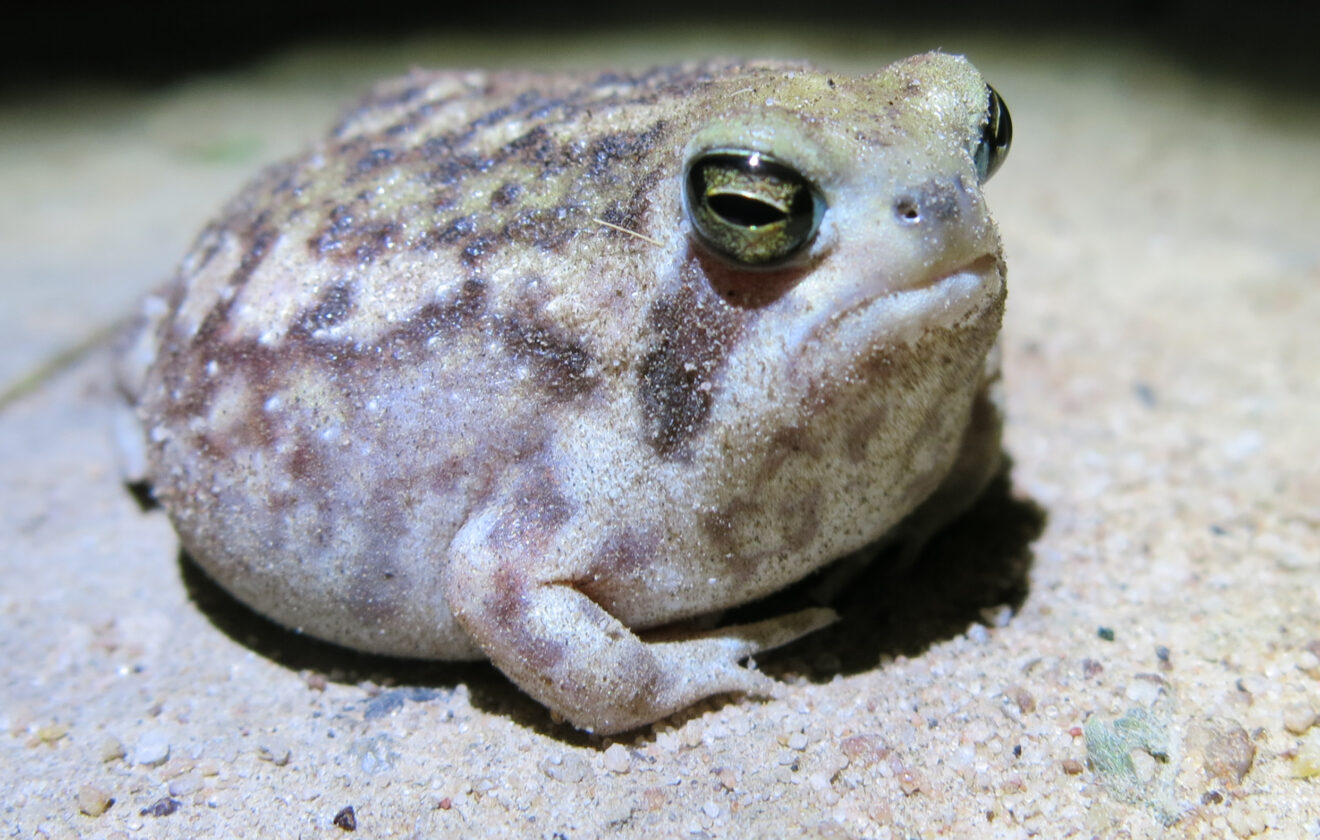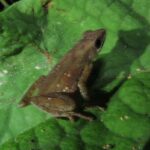The Curious Life of Breviceps adspersus: Unraveling the Mysteries of Africa’s Rain Frog#
Amidst the sandy soils and scrublands of southern Africa, a rather peculiar frog thrives beneath the earth, its round body and comical expression captivating those lucky enough to cross its path. Known scientifically as Breviceps adspersus, and more commonly as the common rain frog or bushveld rain frog, this intriguing amphibian has carved out an unusual niche in nature’s elaborate orchestra. It neither leaps elegantly nor sings melodious notes; instead, it waddles slowly, burrows efficiently, and expresses its displeasure with a startling, high-pitched squeak reminiscent of a child’s rubber toy. This captivating peculiarity opens up a fascinating window into the hidden lives of amphibians—creatures often overlooked but profoundly essential to our ecosystems.
Join us as we delve into the curious world of Breviceps adspersus, exploring its secretive habitats, intriguing behaviors, and vital ecological roles that highlight nature’s remarkable diversity and interconnectedness.
Taxonomy and Classification#
The common rain frog, Breviceps adspersus, belongs to the family Brevicipitidae, a distinctive group of burrowing frogs known for their compact, globular bodies and terrestrial lifestyles. Within the genus Breviceps, species display unique adaptations perfectly suited to a subterranean existence.
The frog’s taxonomic classification is as follows:
- Kingdom: Animalia
- Phylum: Chordata
- Class: Amphibia
- Order: Anura
- Family: Brevicipitidae
- Genus: Breviceps
- Species: Breviceps adspersus
Within its genus, Breviceps adspersus shares its lineage with several other rain frog species, each exhibiting similar adaptations, however differing subtly in morphology, vocalizations, and geographic distribution. The complexity of these frogs’ taxonomy highlights just how diverse and specialized the amphibian world truly is, even within closely related groups.
Natural Habitat#
When envisioning amphibians, one may typically imagine lush streams, misty ponds, or dense, moisture-rich forests. Yet, in stark contrast, Breviceps adspersus thrives in habitats that seem, at first glance, inhospitable to amphibian life. The species primarily inhabits the savannas, grasslands, scrublands, and sandy woodlands of southern Africa, particularly within regions of Namibia, South Africa, Botswana, Zimbabwe, and adjoining areas.
Adaptations to a Harsh Landscape#
The secret to this frog’s success lies in its remarkable adaptations to semi-arid climates and sandy, loose soils. Being fossorial (burrowing), the frog spends most of its daylight hours beneath the surface, utilizing its powerful yet surprisingly small hind limbs and stout toes to dig rapidly. This underground existence protects it from the harsh sun, predators, and desiccation, while simultaneously enabling it to remain efficient and alert at regulating its moisture content.
After heavy rains, especially those heralding seasonal moisture, the species emerges from its underground refuge to breed, feed, or briefly bask, making this species closely tied to seasonal rainfall events. Rainy season evenings in southern Africa offer inquisitive naturalists the rare opportunity to witness the peculiar spectacle of these strange little frogs roaming the surface in search of mates, their movements deliberate and cautious against perfect moonlit landscapes.
Physical Characteristics#
In the world of frogs, aesthetics often vary wildly—from brightly patterned poison dart frogs to elegant tree frogs with graceful leaps—but Breviceps adspersus proudly defies expectations with its own special kind of charm. Small and spherical, adult rain frogs generally measure between 4–5 centimeters, with rounded bodies utterly lacking the streamlined, athletic silhouettes often associated with amphibians.
Anatomy for Living Underground#
The rounded shape is a deliberate evolutionary adaptation, minimizing surface area to volume ratios, thereby reducing water loss dramatically. Its limbs, short and stocky with specialized toes for digging rather than swimming or leaping, speak volumes about its lifestyle underground, embedded in soft earth. The tiny, deeply set eyes seem to tell stories of secretive lives beneath the soil, and its skin—thick, grainy, and warty—mirrors the textures of the sandy habitats in which it thrives.
Coloration and Camouflage#
Typical coloration ranges from sandy-brown to reddish-brown, often speckled and marked with darker blotches or stripes, expertly camouflaging these frogs against the soil where they live and breed. Bright coloration would serve little use to a creature whose primary survival strategy involves blending into the landscape or burrowing quickly when danger approaches.
Behavior and Life Cycle#
The common rain frog’s behavior further cements its status as one of nature’s delightful enigmas. Their lifestyles shy away from classic amphibian patterns, adapting instead uniquely to their challenging ecological niche.
Dietary Habits#
As nocturnal hunters, Breviceps adspersus emerges under the cover of darkness to feed primarily on ants, termites, beetles, and other small invertebrates inhabiting their habitat. Armed with a sticky tongue and patient disposition, they rely on stealth and the element of surprise to secure their meals rather than athletic prowess.
A Unique Courtship#
Following rainfall, the frogs engage in a curious courtship ritual. Males, producing their characteristic squeaky calls from concealed spots, seek to attract receptive females. Unable to clasp firmly onto females due to their short limbs, males instead rely on a glue-like secretion that adheres them to their partner until egg-laying is complete.
Nurturing Offspring on Dry Land#
Interestingly, unlike most frogs that lay aquatic eggs, rain frogs deposit their eggs underground in moist soil chambers. Female Breviceps adspersus typically attends to the eggs, providing some parental protection. The offspring do not pass through a free-swimming tadpole phase; instead, froglets hatch fully formed and capable of terrestrial life—remarkably advanced and prepared for survival.
Ecological Role#
Beyond their adorable appearances and amusing squeaks, Breviceps adspersus performs crucial ecological roles. As insectivorous predators, rain frogs help to maintain balance among insect populations, curtailing outbreaks that might potentially damage vegetation or disrupt ecosystems.
As prey, they form a critical food source for a variety of predators such as snakes, small mammals, and even predatory birds. Moreover, their presence indicates a healthy, intact ecosystem. Being highly sensitive to environmental changes, these frogs serve as invaluable bioindicators, signaling early warnings of habitat degradation that might otherwise go unnoticed.
Threats and Conservation Status#
Fortunately, the current conservation status of Breviceps adspersus is classified by the International Union for Conservation of Nature (IUCN) as Least Concern. Still, localized threats—habitat destruction due to land clearing, urban development, agriculture, and climate variability—pose ongoing challenges. Human-induced modifications can also drastically alter rainfall patterns, directly impacting this rain-dependent species.
Conservation Measures and Awareness#
Protecting areas of natural habitat and promoting sustainable land-use practices remain pivotal actions in securing the long-term survival of these captivating frogs. Educational initiatives to enhance community appreciation for these wonderful, if somewhat quirky, creatures further aid these efforts.
Cultural and Scientific Significance#
Although not widely represented in folklore or traditional symbolism, Breviceps adspersus‘ endearing appearance and peculiar behaviors have gained it increasing popularity among nature enthusiasts and amphibian hobbyists worldwide.
Scientifically, these frogs offer fascinating insights into unique evolutionary adaptations, inspiring research into amphibian biology, drought resistance, and the effects of climate change on terrestrial amphibians.
Conclusion#
The humble yet fascinating Breviceps adspersus reminds us of the incredible diversity of life in even the most unlikely habitats. Ensuring the longevity of these wonderful creatures requires our awareness, admiration, and action. Together, appreciating such species as the common rain frog deepens our stewardship of the planet, emphasizing just how critical every life form is within nature’s intricate tapestry.















